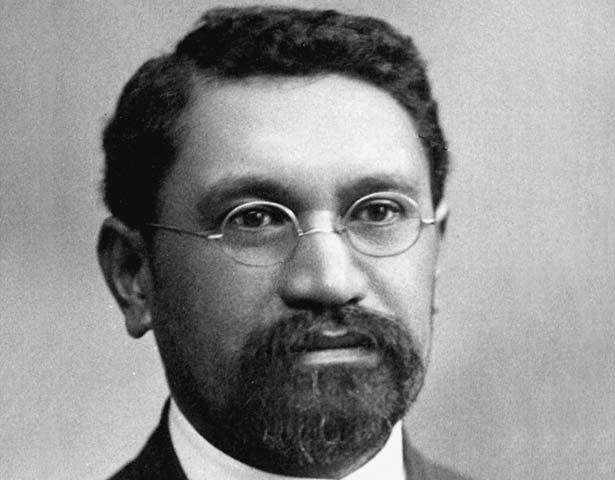
Hōne Heke Ngāpua, of Ngāpuhi, was born in 1869 at Kaikohe. He was named after his great-uncle, Hōne Heke Pōkai, who had opposed Crown sovereignty in the mid-1840s and famously (and repeatedly) cut down the British flagstaff at Russell.
Ngāpua attended native schools and St Stephen’s school in Parnell, Auckland. He later worked as a clerk in an Auckland law firm. In the 1880s he became involved in the Kotahitanga movement. This aimed for Māori control over Māori lands and a degree of local self-government through a Māori Parliament.
In 1893, while only in his early 20s, Hōne Heke addressed the Kotahitanga Parliament. He showed a sophisticated understanding of the Kotahitanga concept, and skilfully expressed the key issues facing Māori.
Through his obvious ability and skills as a speaker he was elected to the House of Representatives later in 1893, representing Northern Māori. In 1894 he introduced the Native Rights Bill. It sought a constitution for Māori, implementation of the Treaty of Waitangi, and a separate Māori Parliament. Although supported by many tribes, the bill was not passed. But it influenced some later legislation, in particular the Māori Councils Act 1900.
In 1898 a number of Māori residents of the Waimā Valley, Hokianga, began a protest led by Hōne Tōia. They refused to pay the dog tax and other taxes imposed by the government and local bodies. The government sent out troops, and an armed conflict threatened to break out. However, Hōne Heke stepped in to prevent bloodshed, and Tōia and his men laid down their weapons and surrendered. Although on the surface this incident was about rates and taxation it was, on a deeper level, one of the final challenges to Crown sovereignty.
Hōne Heke remained a tireless supporter of the Kotahitanga movement until his early death of tuberculosis, at the age of 40, in 1909.
Adapted from the DNZB biography by Freda Rankin Kawharu
Hōne Heke Ngāpua
I whānau mai a Hōne Heke Ngāpua i Kaikohe i te tau 1869. Ko Ngā Puhi tōna iwi. Tapaina ai ia ki tōna koroua a Hōne Heke Pōkai, i ātete rā ki te mana o te Karauna i te tekau tau atu i 1840, nāna hoki te pouhaki o Peretānia ki Kororāreka i topetope.
Ka kuraina a Ngāpua ki ngā kura Māori, ki te Kura o Tīpene i Parnell, Ākarana. Nō muri ka mahi ia hei karaka i tētahi tari rōia i Ākarana. I te tekau tau atu i 1880 ka kuhu a Ngāpua ki te Kotahitanga, he rōpū e whai ana kia whakahokia te mana motuhake o te Māori ki runga i ōna whenua, ki runga hoki i ētahi o ngā whakahaere, mā roto i tētahi Pāremata Māori.
I te tau 1893, i te wā e rua tekau mā aha noa iho ōna tau, ka kauhau a Hōne Heke ki te Pāremata o te Kotahitanga. Ka whakaatu ia i tōna mārama ki te ariā o te Kotahitanga, ki ngā take nui hoki kei mua i te iwi Māori.
Nā tōna tohungatanga ki te whiri kōrero, ka pōtitia a ia hei Mema Pāremata Māori mō Te Tai Tokerau i te tau 1893. I te tau 1894, nāna te Pire Tika Māori i tāpae ki mua i te Pāremata. E tono ana te pire mō tētahi kaupapa taketake mō te Māori, kia whakamanatia te Tiriti o Waitangi, kia tū hoki he Pāremata Māori. Ahakoa ngā tautoko mai a te maha o ngā iwi, kāore i ture te pire. Heoi, ka whai wāhi ētahi o ana whakaritenga ki ngā hanganga ture o muri, pērā i te Ture Kaunihera Māori o 1900.
I te tau 1898 nā Hōne Tōia i ārahi ngā Māori o te riu o Waimā i Te Hokianga kia kaua e utu i ngā tāke kurī me ētahi atu tāke nā te kāwanatanga me te kaunihera ā-rohe i uta ki runga i a rātou. Ka tonoa e te kāwanatanga āna hōia ki te tāmi i tēnei takahi i te ture. Ko te kuhunga atu tērā o Ngāpua ki te haukoti i te rerenga o te toto; ka tukua e Tōia mā ā rātou rākau ki raro. Ahakoa e ātetetia ana ngā reiti me ngā tāke i utaina, ko te pūtake kē o te riri, ko te whakatuma ki te mana o te Karauna. Koia anō tētahi o ngā wero whakamutunga i tēnei mana.
Ka pūmau a Ngāpua ki te Kotahitanga, tatū rawa ki tōna matenga tōmua i te tau 1909 i te mate kohi. E 40 tōna pakeke.
How to cite this page
'Hōne Heke Ngāpua', URL: https://nzhistory.govt.nz/people/hone-heke-ngapua, (Ministry for Culture and Heritage), updated 8-Nov-2017


Community contributions